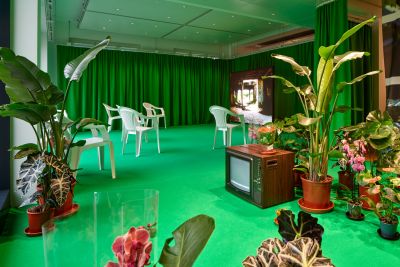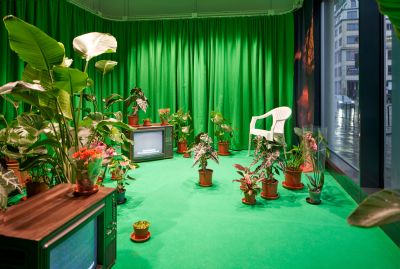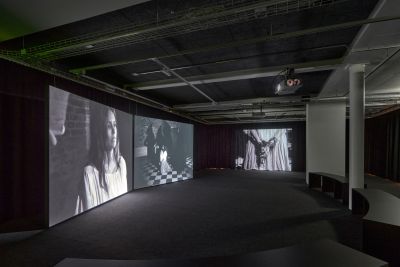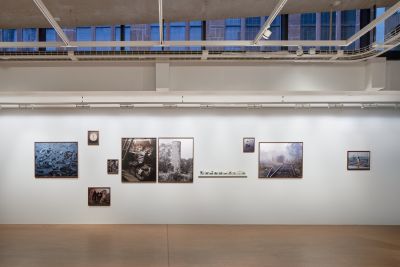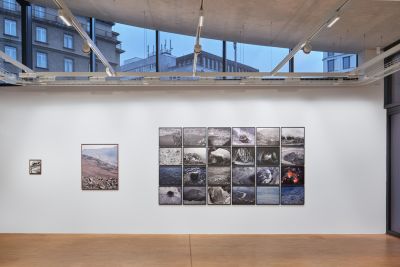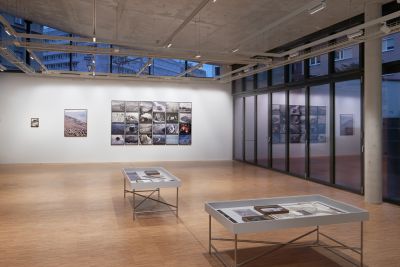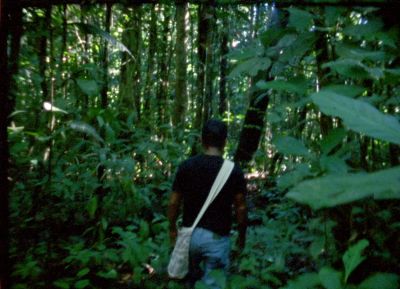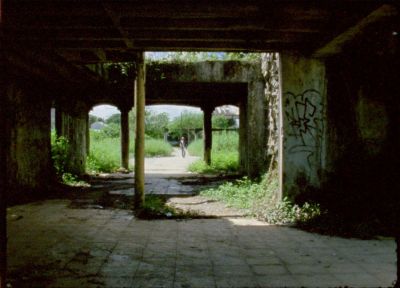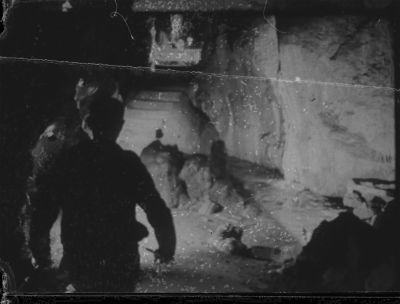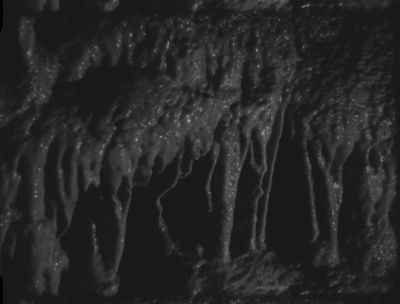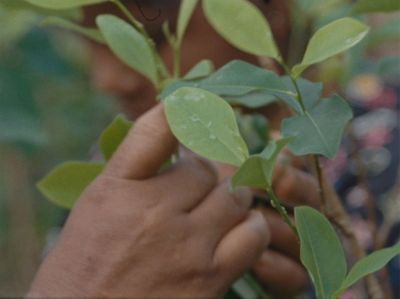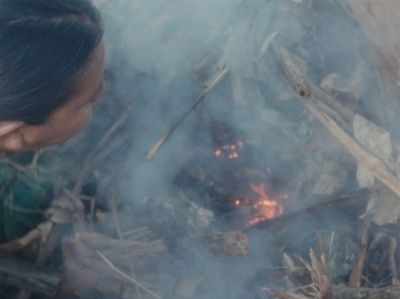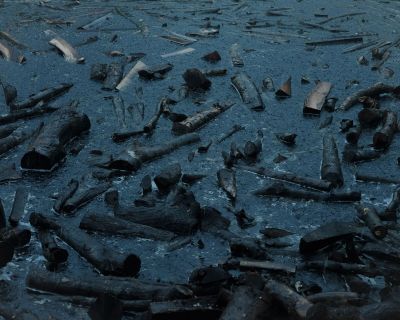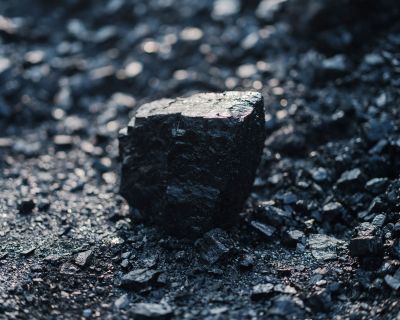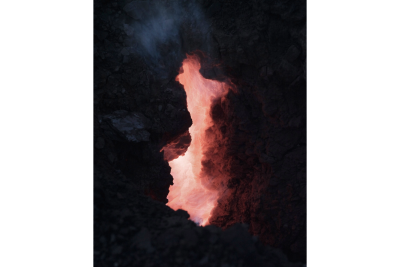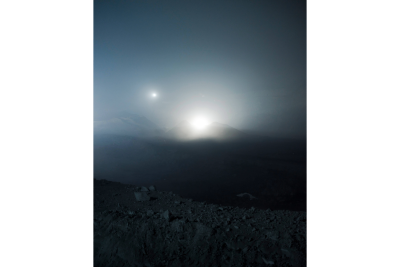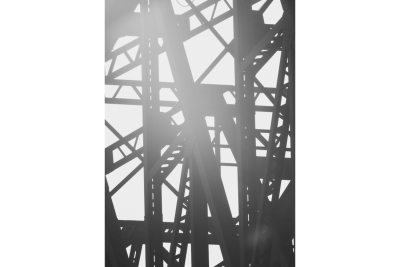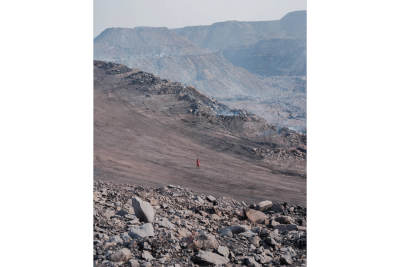Exhibition
After Nature . Ulrike Crespo Photography Prize 2024
The exhibition shows the works of the winners of the ‘After Nature . Ulrike Crespo Photography Prize 2024’, which we award together with C/O Berlin.
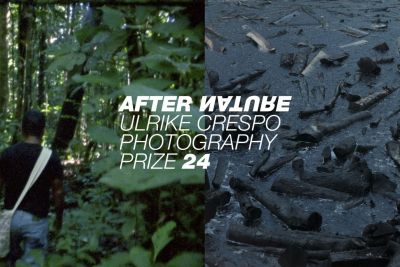
Opening Hours
here
Duration
February 27—May 25, 2025
Location
to the Open Space in the Crespo House,
Weißfrauenstraße 1—3, 60311 Frankfurt
Admission
Free
With Laura Huertas Millán (*1983, Colombia) and Sarker Protick (*1986, Bangladesh), the Crespo Foundation is presenting the 2024 prizewinners, whose artistic works look at a nature whose condition is inextricably interwoven with the social and political manifestations of our lifestyles.
Installation Views
Laura Huertas Millán
Laura Huertas Millán (*1983, Colombia) is an artist and filmmaker. She has a PhD from Université PSL (SACRe program) in Paris, which she developed at the Sensory Ethnography Lab at Harvard University. Her films have been shown at leading world cinema festivals and awarded prizes at the Locarno Film Festival, FIDMarseille, Doclisboa in Lisbon, and Videobrasil in São Paulo. She has had solo exhibitions at the MASP São Paulo, the Maison des Arts de Malakoff, and the Museum of Modern Art in Medellín. Her films have also been exhibited and screened at the Centre Pompidou and the Jeu de Paume in Paris, the Solomon R. Guggenheim Museum in New York, the Times Art Center Berlin, and presented at biennials such as the Liverpool Biennial, FRONT International: Cleveland Triennial for Contemporary Art, the Videonale in Bonn, and the Sharjah Biennial. She lives and works in France.
Works in ‘Curanderxs’
Sarker Protick
Sarker Protick (*1986, Bangladesh) is a photographer, teacher, and curator. He studied at the South Asian Media Institute — Pathshala in Dhaka, where he now directs the international program. He is also co-curator of the Chobi Mela Festival, the longest running photography festival in Asia. His works often address different notions of time and are rooted in Bangladesh and the historical region of Bengal. They are shown in international exhibitions, and he has received various grants and awards for them, including Foam Talent and the Magnum Foundation Fund. He lives and works in Dhaka, Bangladesh.
Works in ‘অঙ্গার . Awngar’
Jury Statements
‘Laura Huertas Millán’s multichannel installation promises to offer a tangible experience of the coca plant. A plant whose chemical component is the main ingredient of the drug cocaine, and for that reason is merely associated with crime and addiction, it has traditionally played a special role in native communities. By putting this plant back on a pedestal, Millán hopes to liberate it and bring to life a forgotten historical aspect of her homeland Colombia. Her layered visual approach contributes to the powerful depiction of this story.’
‘Laura Huertas Millán’s multichannel installation promises to offer a tangible experience of the coca plant. A plant whose chemical component is the main ingredient of the drug cocaine, and for that reason is merely associated with crime and addiction, it has traditionally played a special role in native communities. By putting this plant back on a pedestal, Millán hopes to liberate it and bring to life a forgotten historical aspect of her homeland Colombia. Her layered visual approach contributes to the powerful depiction of this story.’
Curator, Fotomuseum Den Haag, The Hague
‘Sarker Protick’s prizewinning project could not be more relevant to the issues of ecology. It visualizes the historical role of coal in fueling the world’s first fossil fuel economy and precipitating climate change. Through a visual language that is both poetic and precise, Sarker Protick investigates the interlinked histories of the Anthropocene, British imperialism, and resource extraction on the Indian subcontinent.’
‘Sarker Protick’s prizewinning project could not be more relevant to the issues of ecology. It visualizes the historical role of coal in fueling the world’s first fossil fuel economy and precipitating climate change. Through a visual language that is both poetic and precise, Sarker Protick investigates the interlinked histories of the Anthropocene, British imperialism, and resource extraction on the Indian subcontinent.’
Newcastle University
Opening hours
Exhibition
28.02.–25.05.2025
Monday, Thursday and Friday 2 pm to 8 pm
Tuesday and Wednesday closed
Saturday and Sunday 11 am to 6 pm
Unfortunately, the exhibition will be closed on the following days :
7.3., 8.3., 9.3., 14.3., 24.3., 5.5.25
We expect to be open until 1 a.m. for the Night of the Museums on May 10.
Download Media
The bilingual (german/english) booklet accompanying the exhibition is available soon.
Partners
The ‘After Nature . Ulrike Crespo Photography Prize’ will be jointly awarded by the Crespo Foundation and C/O Berlin Foundation from 2024 onwards. In its capacity as an exhibition venue for photography and visual media, the C/O Berlin Foundation will be responsible for implementing the project.

